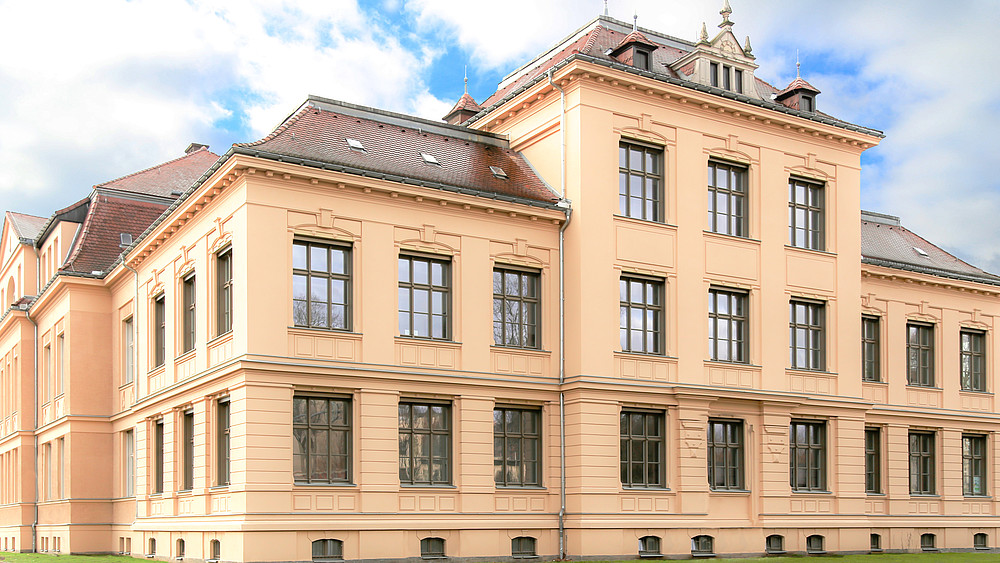University Council gives the green light for the Zittau/Görlitz University of Applied Sciences' Development Plan 2025.

Zittau/Görlitz University of Applied Sciences (HSZG) has finalized its plans for the period up to 2025. After the Senate approved the Rectorate's draft at its meeting in March, it has now also been approved by the University Council at its May meeting.
Rector Prof. Friedrich Albrecht was particularly pleased that both bodies passed their resolutions unanimously:
"It paid off that we embedded the drafting of the development plan in an intensive and broad-based in-house discussion process, which ranged from the establishment of a Senate Commission on University Development to joint consultations between the Senate and University Council. This ensured that the objectives and measures resulting from it met with a high level of acceptance among the members of our university."
In this context, the Chairwoman of the University Council, Prof. Dr.-Ing. Sylvia Rohr, refers in particular to the dynamics that lie outside the universities:
"Regional and industrial structural change, the increasing digitalization of the world of work, competition in an increasingly heterogeneous education market, demographic changes as well as the need for new digital forms of learning and teaching pose major challenges for universities. The HSCG must therefore become more proactive at its core: even more open to change and at the same time be creative and innovative."
The HSZG has identified its role in the structural change of Lausitz as the most important strategic task for the coming years. The planned phase-out of lignite-fired power generation poses enormous challenges. The region is facing an economic and structural upheaval of a magnitude similar to that of the 1990s. The HSZG wants to play its part in establishing an effective field of innovation in Lausitz that encompasses both technological and social innovations. It is also about researching and developing efficient, competitive manufacturing technologies, products and systems as well as innovative working and social models for designing attractive and sustainable living environments, taking into account regional characteristics and potential.
In order to fulfill this role, the HSZG continues to rely on its broad range of subjects, with over 40 courses on offer. New degree courses are being set up in applied nursing sciences, applied natural sciences and pharmaceutical biotechnology , as well as the new specialization area of cyber-physical systems, which focuses on technological developments relating to Industry 4.0, but also on assistance solutions for self-determined living (AAL) for older people, for example.
The basic profile of the university will be retained: The areas of expertise "Energy and Environment" and "Transformation Processes in Economy and Society" will continue to take center stage, as will the international focus on Central and Eastern Europe.
Increased attention - and thus greater use of resources - will be placed on the areas of research, transfer and innovation. This is where the HSZG sees the greatest opportunities for shaping the future and development prospects based on its previous competitive successes. In two BMBF excellence programs for universities of applied sciences - "FH-Impuls" and "Innovative Hochschule" - funds have been raised that will secure third-party-funded research and development work for years to come. In addition, there are permanently established or establishing collaborations with strategic partners such as the Fraunhofer Gesellschaft (Oberlausitzer Kunststoffzentrum in Zittau, Cyber Security Laboratory for Critical Infrastructures in Görlitz) or unique research and development facilities in Germany such as the Zittau Power Plant Laboratory (ZKWL), which was set up and is operated by the IPM University Institute and is used for research into measures to increase energy efficiency, energy storage and the use of renewable energies.
The HSZG assumes that this development will continue, with research and development topics becoming increasingly interdisciplinary - i.e. no longer only concerning technological or social issues. These will increasingly have to be dealt with on an interdisciplinary basis. To this end, management will be geared towards strengthening cooperation across disciplinary boundaries, organizational areas and locations, thus expanding the university's special potential at the interfaces of engineering, natural sciences, social sciences and economics and integrating it into research, teaching and transfer.
The HSCG is setting up a staff unit assigned to the Rectorate to provide good coordination and support for the processes required for this. At the same time, in order to intensify research and knowledge and technology transfer in the faculties and institutes, a supporting basic staffing level for mid-level academic staff will be established on a decentralized basis.
In the area of studies and teaching, structures and processes will be established or existing ones strengthened that serve to develop quality and improve student success: Improvement of student advising and support, introduction of system accreditation, expansion of continuing education in higher education didactics are the most important keywords here.
A significant increase in the number of students is not planned. The Saxon university development plan stipulates that the number of students at the HSZG should increase from the current 3,000 to 3,200 in 2025. This corresponds with the demographic starting position and what the university's range of subjects can provide. A realistic quantitative perspective also helps to focus on qualitative goals.
Another focus of development planning is personnel development. Not only in the economy, but also in the field of science, the issue of securing the supply of skilled workers is of increasing importance. The HSCG will respond to this by mid-2019 with a comprehensive personnel development concept that comprehensively addresses the core issues of staffing, recruitment, management and career development.
The structural measures are appropriate to the objectives of the development plan. For example, the central facilities will be expanded by establishing the Center for Cross-Faculty / Trans-Faculty Teaching. This center will bundle the extremely diverse teaching units, which no longer relate to just one faculty, into one unit.